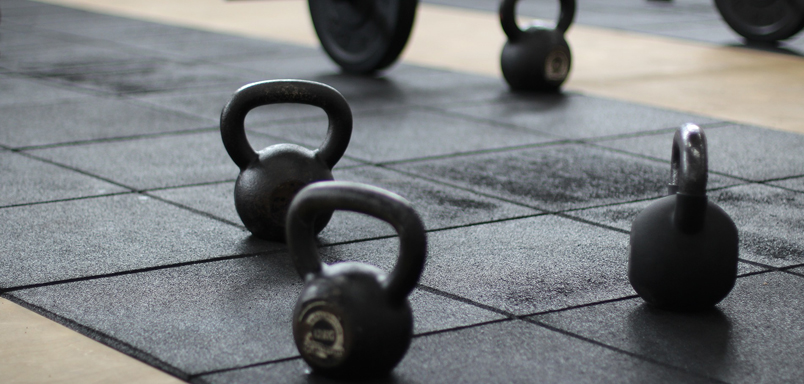Getting stronger is essential for healthy ageing
Introduction
After the age of fifty, both men and women start to undergo significant physical and hormonal changes. Women start to experience the menopause, whereby estrogen levels decline. This can be accompanied by tiredness, stiffness, and weight gain. At around the same age, testosterone levels in men start to drop, along with lower energy, decreased muscle mass and weight gain. Over the next few decades, both men and women are more prone to functional mobility problems. Functional mobility includes activities such as walking longer distances, climbing stairs, getting out of chairs or off the floor, and preventing falls. Functional strength and mobility are essential for independent healthy living free from carers or hospitalisation. Nobody wants to be reliant on others as they age.
Strength is the most important predictor of functional limitations, mobility problems, and disability in older people. Older people who lack strength and muscle mass are much more likely to struggle with day-to-day functional tasks ranging from walking to shopping to independent living. A team at Michigan University noted that strength is much more important than aerobic capacity in preventing functional decline, disability, morbidity, and mortality. They added that muscle strength is essential for mobility and movement.
Recently, an international team based in universities in Brazil and Spain analyzed exactly one hundred studies to determine the importance of strength training for older people. The findings of that review study are remarkably consistent for men and women, and there are some fascinating insights.
Types of Strength
While general all over ‘strength’ is important, there are two ‘types’ of strength that are particularly beneficial.
Lower Body Strength
The first is lower body strength. Tufts University researchers note that lower body muscle power is the most ‘critical’ for avoiding physical impairments and mobility limitations as people age. This means exercises that train the big muscle groups below the waist. They include the deadlift, the squat, the leg extension, and the leg press.
Power Output
The second is ‘power output’. Power output is explosive muscle strength. It’s how quickly you can move a weight. Muscle power output is even more important than total or pure strength for functional movement as people age. In practice, this means that people with better muscle power output are less likely to be frail, have a physical disability, have mobility problems, or be dependent on others as they age.
Muscle power output is increased by strength training safely at a higher speed or with explosive power, rather than progressively grinding the weight up or pulling it down. It is usually with a lighter weight. But there is a condition for this type of explosive lifting: the weight used is between 40-60% of a person’s one rep maximum lift. It has to be a lighter weight. A number of researchers have found this amount of weight to be optimal for increasing power output. Thus, if a person can deadlift 110 kgs, spending one session a week deadlifting 50-60 kgs at a higher, more explosive speed will increase power output and prevent functional physical decline better than just heavy lifting every session.
There is an added benefit when reducing the weight for power output. Namely, it also allows for rest and recovery.
Power output perfected: the mighty kettlebell swing
Muscle power output is further increased when the muscle is explosively concentrically contracted. This is when the muscle is shortened, before being lengthened again. Think about a bicep curl: it shortens when you curl the weight towards you, and it lengthens when you extend your arm. The problem with the bicep curl is that it only exercises a small, isolated muscle. For maximum muscle power output an exercise is needed that is:
- Performed explosively at speed.
- Is safe.
- Contracts a major muscle group.
- Strengthens the body.
- Is performed with a lighter weight.
The kettlebell swing fulfills all of these conditions. Remember also that lower body muscle power is critical for avoiding physical impairments and mobility limitations as people age. The kettlebell swing works these big lower body muscle groups. It works the lower abs, the hips, glutes, hamstrings, quads, and calves, with a side benefit that the upper body also gets stronger.
Therefore, if strength is the most important predictor of functional and physical limitation in old age, and muscle power output is the most important aspect of strength for healthy ageing, then the kettlebell swing is arguably the most important, useful, and safe exercise.
Brute Strength
Brute strength, or heavy lifts, still play an important role. Brute strength also prevents functional and physical impairment as people age.
Recently, there have been a number of meta-analyses that looked at the most effective ‘dose’ of strength training for people as they age. Think of strength training like a medicine: you have to take the right dose; not too much or too little.
Dose
Dose — How heavy to go
Older people (i.e. above the age of 50) get stronger when they lift weights in the range of 65% – 80% of their one rep max. The sweet spot is not to train above 80% of your one rep maximum lift. Training in this range is more effective for total, brute strength (i.e. getting stronger) and for functional strength than lifting heavier weights. Moreover, training in this sweet spot of 65-80% of your one rep max results in more muscle mass. A person might be able to train with heavier weights, but study after study has shown that it is not as effective.
In practice, this means a person who can deadlift 110 kgs would train in the range of 70 – 90 kgs. Over time their one rep max would increase, and they would increase their training weight. It’s not about going all out every time.
Dose — How many sets
One set per exercise is effective for people starting a new exercise. The benefits then start to taper off after twelve weeks. Long-term, at least three sets per exercise has been shown to be the most effective dose of brute strength exercises for healthy ageing and an increase in strength.
Dose — Frequency
In a review of over one hundred studies, an international team of researchers found that two or three strength training sessions per week is optimal. This amount of training greatly improves strength and functional movement in people as they age. One session per week is not as beneficial.
Putting it all together
A strength training program to maintain and improve functional movement, while preventing physical decline and mobility problems should follow these principles:
- Have a brute strength exercise performed at no more that 80% of a one rep maximum lift.
- Ideally, this training weight would be cycled between 65 – 80 % of their one rep max.
- The brute strength exercise(s) would have a lower body component (e.g. the deadlift or squat).
- Brute strength exercises would be performed two times per week with at least three sets.
- The second session every week would be lighter: as low as 50% of the one rep max and be performed more explosively. This would allow for increased power output and better recovery.
- A safe explosive strength exercise should be included at least twice per week. The kettlebell swing is without peer here.
In practice, a person need only pair two exercises.
For example:
- The deadlift or the squat twice a week and the kettlebell swing twice a week.
- The deadlift performed once a week heavy, once a week explosive and light, and a pressing movement such as the bench press or press ups to work the upper body.
- If machines are preferred then the leg press machine could be used in place of the deadlift or squat, remembering to make one session heavy and one session explosive and light.
Dr John Sullivan is a member of Qiyas’ Scientific Advisory Board. He is 72 years old. For a number of years he has been applying these strength training principles, focussing on the kettlebell swing and the Turkish get-up. This is what a 72 year old looks like when he follows this type of strength training. Not a functional mobility problem in sight.

